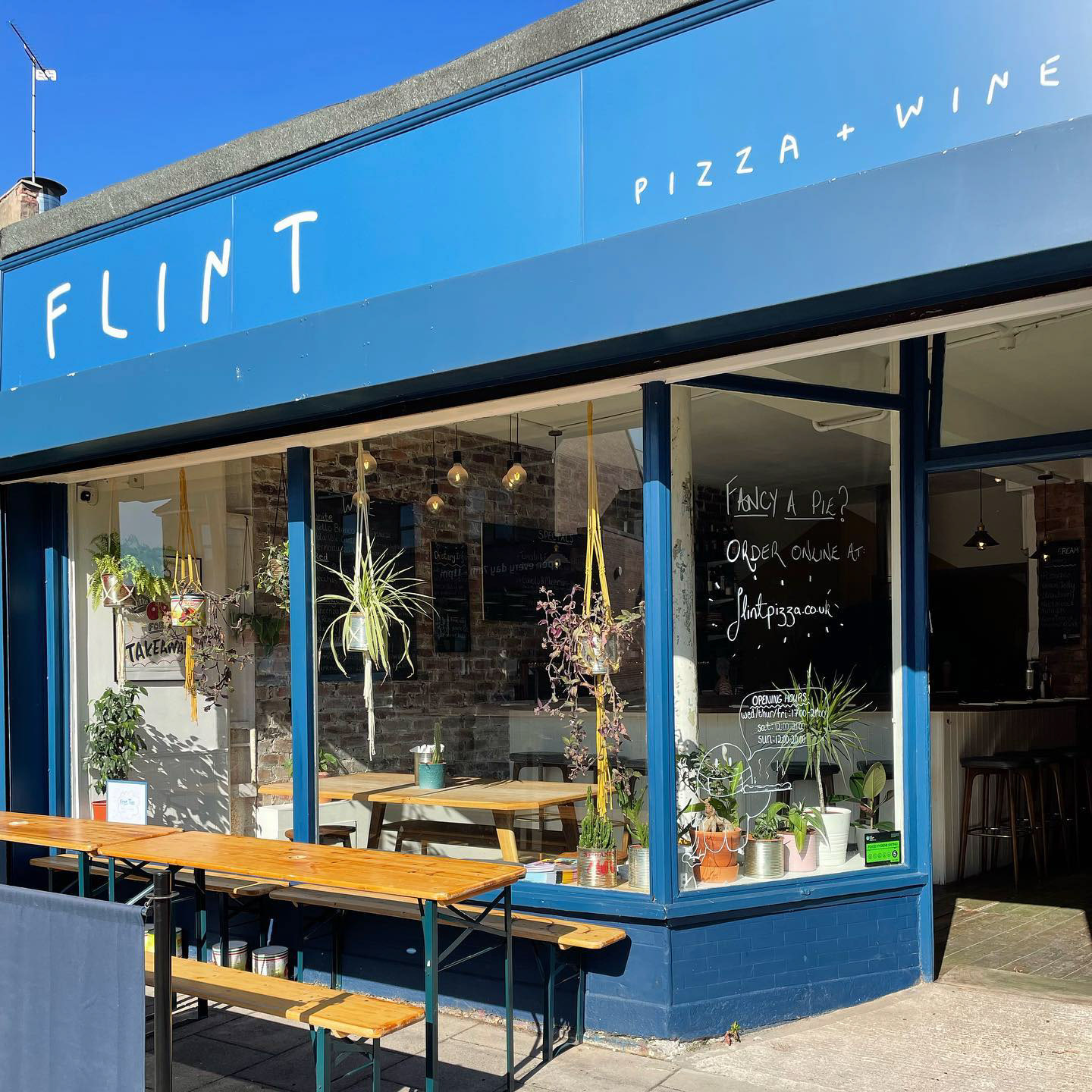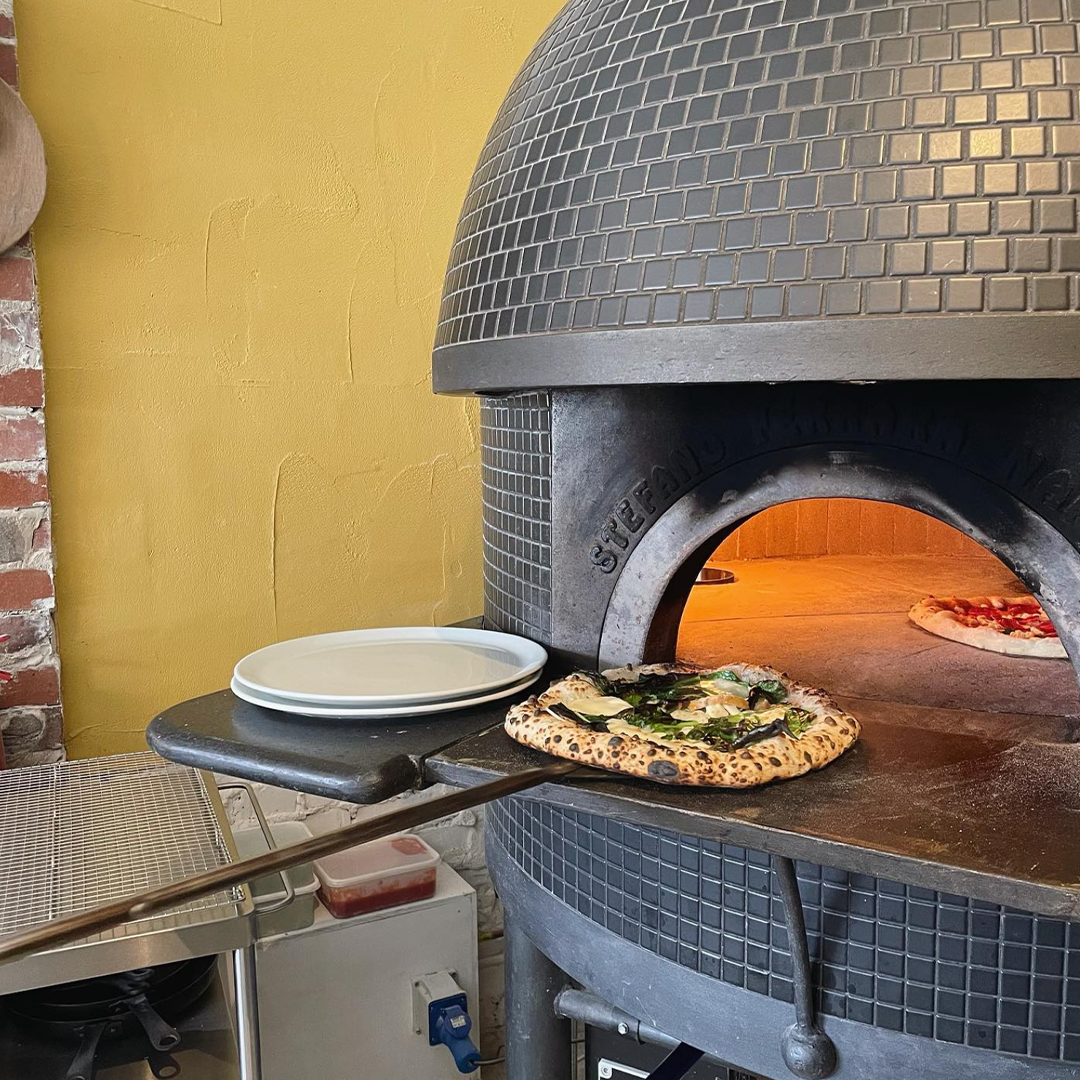The ever-alluding Flint Pizza sits on a busy street in Heaton, Newcastle-upon-Tyne, called Chillingham Road, which is a road that’s slowly starting to see the more cool, quirky approach that many are already accustomed to in the suburbs of Manchester or London. Flint slots in nicely, providing a quaint spot for punters to sit and enjoy a quality pizza amongst a tightly-knit slice of hustle and bustle and away from the greasy, poorly crafted pies of the kebab shops that seem to be characteristic of the area.
I’m not well travelled in the pizzaverse (is this a thing?) and, to be frank, despite my mundane ramblings about pies that many people have to endure, the level of my knowledge is very deep inside the ‘novice’ category. The experience I hold in this space is very much limited to the shores of the British Isles and to whatever documentaries and mini-series are available online from (and only from) reputable aficionados. The reason I’m providing this very random and probably unneeded context is that the pie I had at Flint just took the top spot on my list, due to not only how good it was but also the surroundings it was served in.
The Neapolitan is gruellingly romanticised by the majority of folk, myself included. The fetishisation of the concept is rife, especially over those classic mosaic-clad ovens, and the science behind the dough is seen as a sign of higher social status if you can explain the ratios between the flour and the yeast. This style of pizza seems to be everywhere at the moment, and the exponential influx doesn’t seem to be slowing down. Maybe it’s because it’s the original style of pie, starting in Naples and taking over the world, or maybe because it takes such a short time to cook and punters can no longer face waiting due to the reduced attention span (thanks TikTok). I’ve got no data or enhanced theorisation to support the latter, though.
Flint Pizza opened in 2019 before a lockdown made people buy their own portable pizza ovens and become masters of the dough themselves. The idea to start Flint came about during a visit to Budapest, where a tiny pizzeria with lines out the door and an exemplary product stole the heart of one of Flint’s co-founders. And emulating this was the aim for Flint, which they most definitely have achieved.
Flint landed in Heaton with an umph and hasn’t shown signs of slowing down. It’s small but packs a punch as if it were a featherweight world champion, and with the current state of the hospitality landscape, it’s shaping up to continue fighting against Goliath, which in this case is multinational capitalist, soulless restaurants that subconsciously aim to remove the pure connections food can create between people. As you approach the restaurant, you’ll more than likely be met with a queue because Flint is walk-in only, unless you can conjure up four friends from somewhere and go as a group.


I finally entered the joint after a frustrating hunt for a free parking space on the streets of Heaton that were seemingly entirely permitted, only to be met with the aforementioned expected queues, apart from one outdoor spot in front of the big window. I’m normally inclined to want to sit inside, amongst the theatre of a restaurant, watching the show unfold in front of me. And this want, which often portrays itself as more of a need, was notable in this joint, but I had yearned for a visit to Flint for too long to be captious. I took the chair outside to avoid further disappointment, but not before absorbing the compact, chaotic bustle unfolding in front of me. The way the restaurant is laid out is special, with a big, classic-designed Neapolitan pizza oven in the back corner and a pizzaiolo area reminiscent of an artist’s studio. Stools then surrounded this area, offering the optimum spot for the best possible experience.
I grabbed a menu and headed outside, sat on the bench and looked up. The grey of Newcastle glared down, and I prayed the rain held off long enough for me to order and finish my pie. The good news is that it did.
I’ve discussed the decor, ambience, and my journey to Heaton enough. The food is the most important part, not my self-indulgence and account of my time in the area as if I’m the late, great Anthony Bourdain trudging through the streets of Myanmar. At first glance, the menu looked pleasing. On a second, more in-depth look, it looked exceptional. I opted for the Capocollo with a bottle of Sardinian beer, Ichnusa, on the side, of course, because when it’s on offer, it’s a case of it being a necessity.
As standard, the pizza arrived rapidly, as it does when it’s Neapolitan. The dough is always proofed for 24 hours and then kneaded and shaped to cook. The science behind Neapolitan dough is intricately involved, but from just looking at the final product, you can tell the folks at Flint have it locked down. The crust is splattered with air bubbles that are tinged with char. The base is thin, with a superb flop but not enough to make it soggy. And the taste is beautiful. I have the impression that the oven is also powered by gas, rather than the commonplace wood-fired type we are all accustomed to seeing (and hearing about) at a pizza joint. A wood-fired oven offers a smokey, campfire hint to the base, whereas a gas oven can provide a cleaner cook, keeping the heat more consistent and well-rounded.
Capocollo, which is a dry-cured cold cut made up of a muscle from the pork shoulder, sits atop the sweet tomato base, as it says on the tin, accompanied by rocket before a delicate sprinkling of parmesan is slung over the top. The combination of all these elements created an exquisite pizza, one that was worth the wait. I long for my return to Flint, where I may have to go all out and have three courses to sample some of the small plates as well as a dessert. And I can guarantee you I’ll find pleasure in sitting and waiting for a seat at the bar, so I can sit and watch the skill and enthusiasm bubble over and spill into the restaurant, making for a special feeling.
